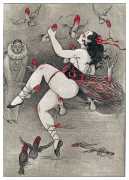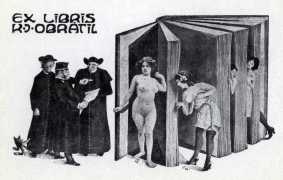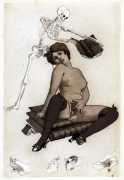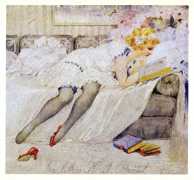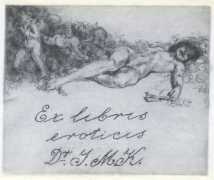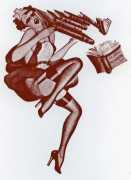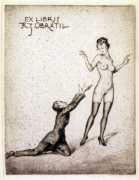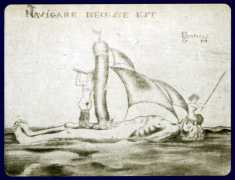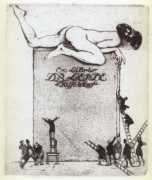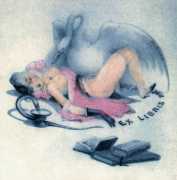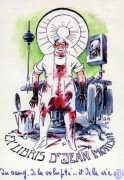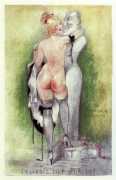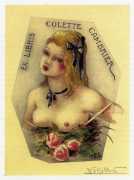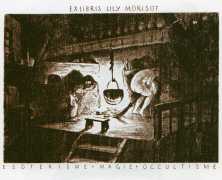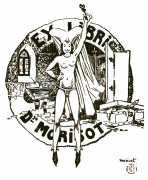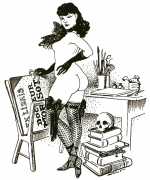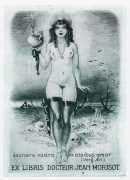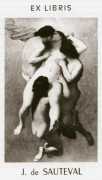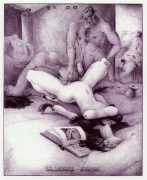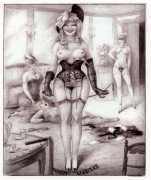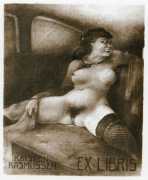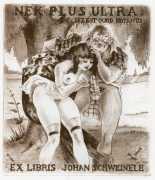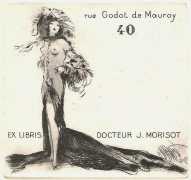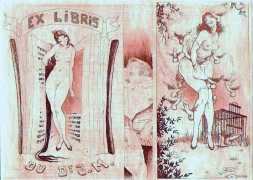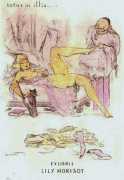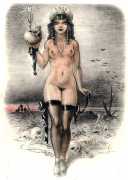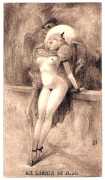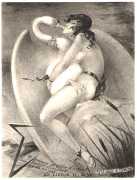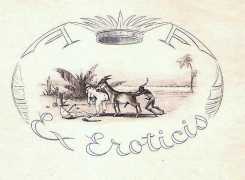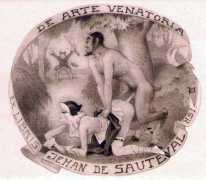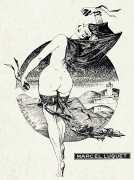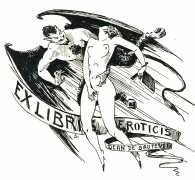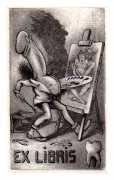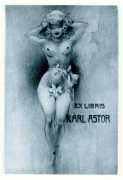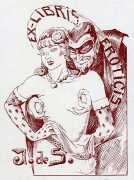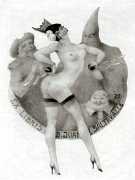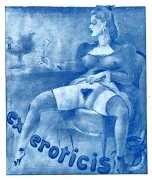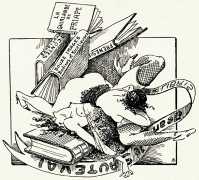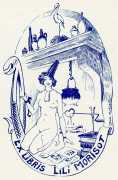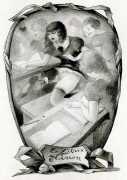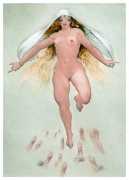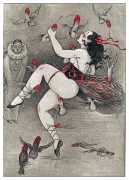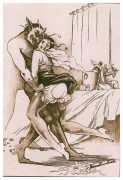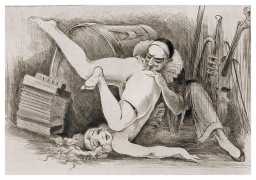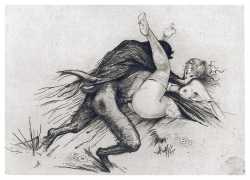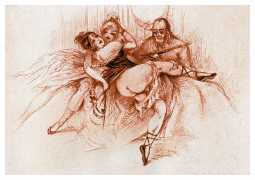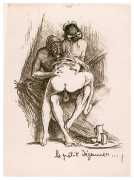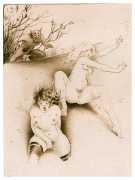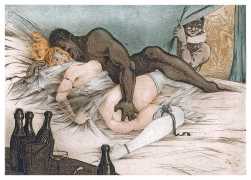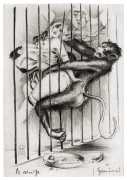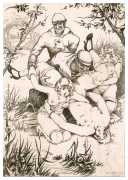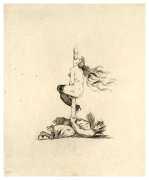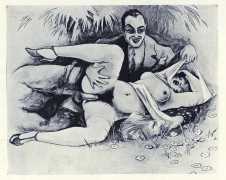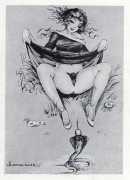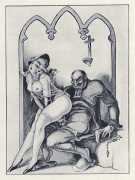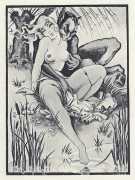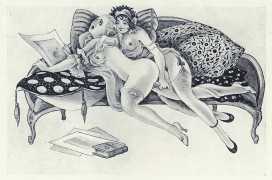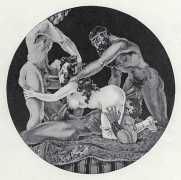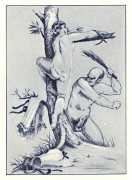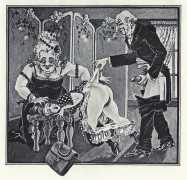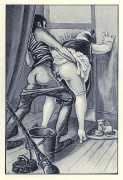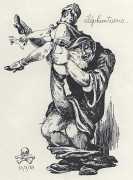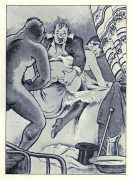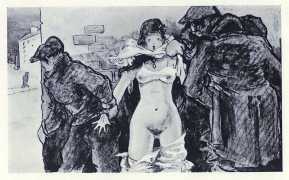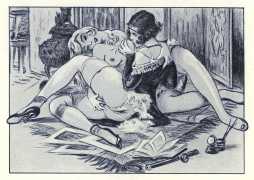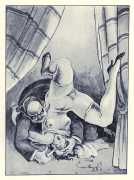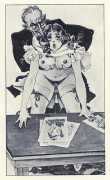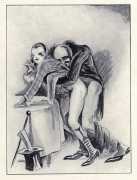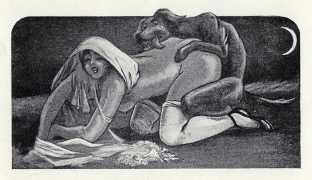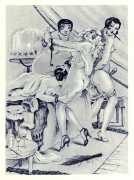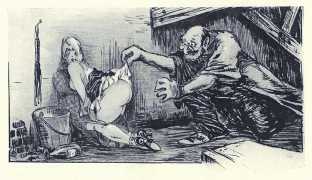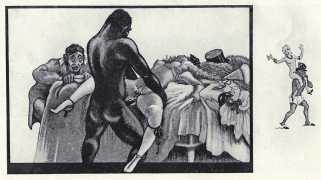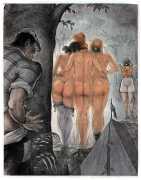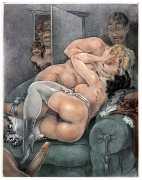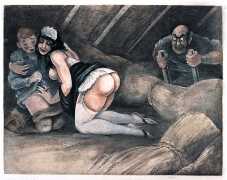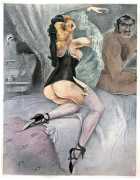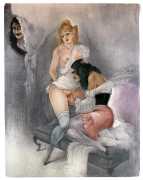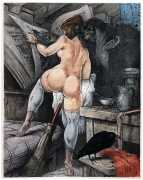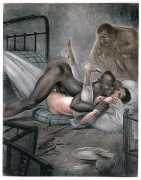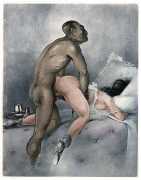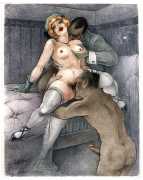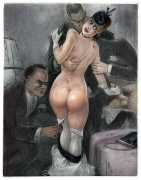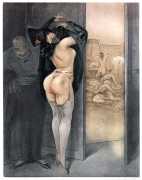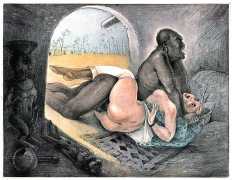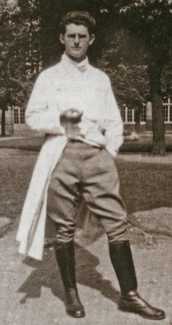 Jean Morisot, who regularly used the pseudonym Jean de Sauteval for his artistic work, has two main claims to fame. He is one of the best-known illustrators ever to work in the niche field of Ex Libris design, and probably the only established graphic designer whose main occupation was as a dentist. Morisot grew up in the village of Vaux-sur-Blaise, in the Champagne region of western France, and studied in Wassy, Troyes and Paris. In 1925 he married Lily, who was to be both lifelong companion and artistic inspiration, and the following year received his diploma in dental surgery.
Jean Morisot, who regularly used the pseudonym Jean de Sauteval for his artistic work, has two main claims to fame. He is one of the best-known illustrators ever to work in the niche field of Ex Libris design, and probably the only established graphic designer whose main occupation was as a dentist. Morisot grew up in the village of Vaux-sur-Blaise, in the Champagne region of western France, and studied in Wassy, Troyes and Paris. In 1925 he married Lily, who was to be both lifelong companion and artistic inspiration, and the following year received his diploma in dental surgery.
Alongside his medical profession he had always been fascinated by graphic design, and while in Paris became friends with many of the important illustrators of the day, including André Dignimont, André Collot, Sylvain Sauvage and Tsuguharu Foujita. His earliest known Ex Libris designs date from the late 1920s, and he continued to create new compositions for the rest of his life. From 1933 to 1940 he practised dentistry and oral medicine in Thonnance-lès-Joinville, then moved permanently to Paris. As well as their Paris town house in rue Godot de Mauroy (which he liked to describe as being in the city’s best red-light district), the Morisots had a holiday villa in the eastern suburb of Chessy. After a heart attack in 1949 Jean’s health was never very good, but he continued to work hard at his artistic endeavours, and was awarded the Legion d’Honneur in 1953.
Ex-Libris collectors who knew Morisot noted that he was a brilliant character, but could be difficult. There were rumours of household scenes, of too many trips to the ‘hot’ district behind the Madeleine to sample the models he used for his Ex-Libris. His friend, the poet poet Raphaël Barquissau, wrote that ‘everything is as contrasting in his house as it is in his spirit’. Morisot was a dedicated collector, adding to the faience and sculpted wood of Haute-Marne collections accumulated by his father Louis Morisot, a notary in Vaux, prizing old masters, contemporary paintings and oriental arts. By the end of his life he had collected more than 5,000 examples of Ex-Libris. After his death, the Belgian collector Serge Golifman bought the entire collection, which was dispersed in an auction at Bernaerts of Antwerp in 1986.

